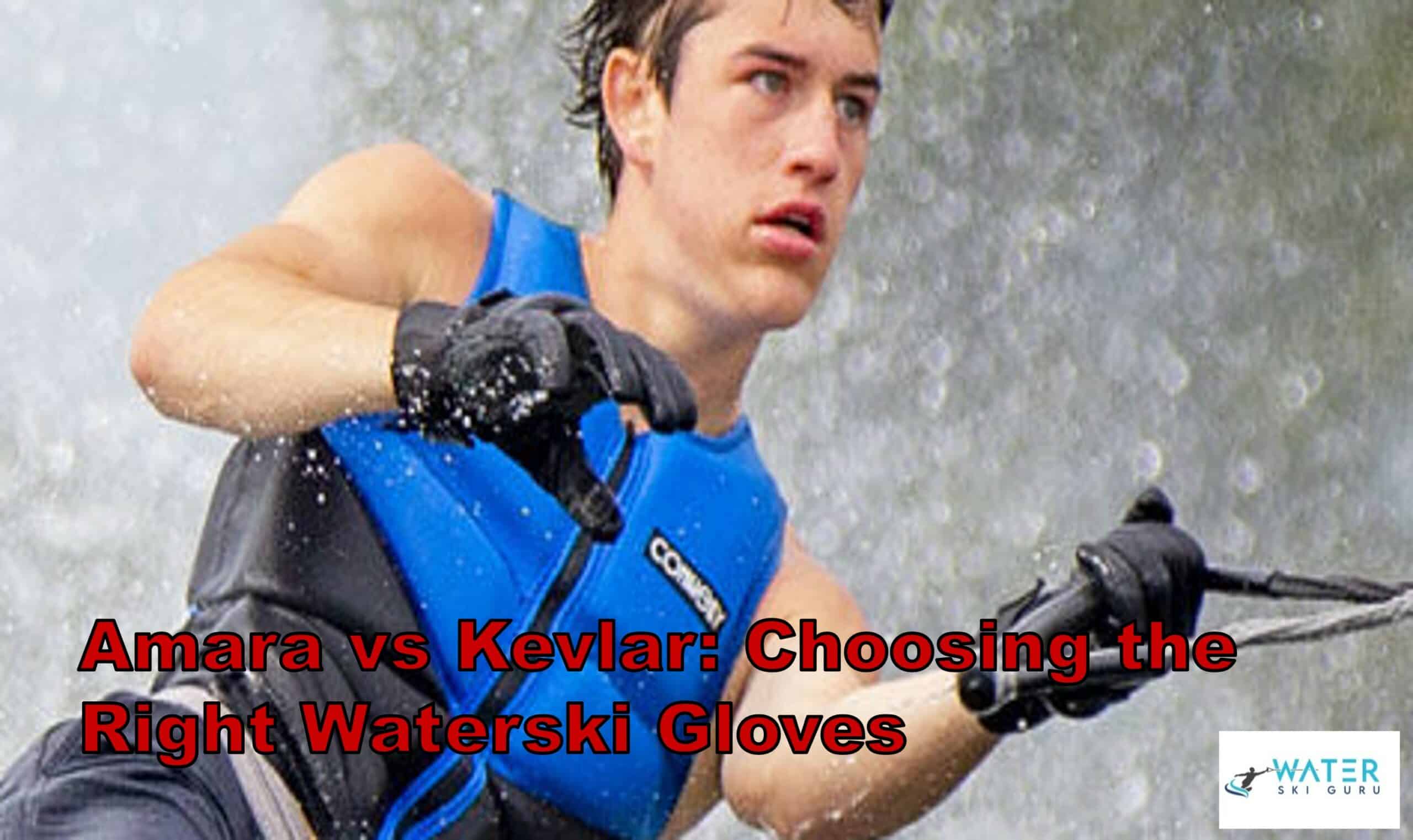If you’re an avid water skier, you know that having the right gear can make all the difference in your performance and comfort on the water. And when it comes to gloves, two of the most popular materials are Amara and Kevlar. Choosing the right one for you can be a daunting task, but understanding the differences between the two can help you make an informed decision.
Amara and Kevlar have distinct characteristics that offer different benefits for water skiing. Amara is a flexible, synthetic material that provides a softer, smoother palm for better feel and control. Kevlar, on the other hand, is a thicker, more durable material that can withstand more wear and tear.
Ultimately, the choice between the two comes down to personal preference and what works best for your individual needs. In this article, we will explore the differences between Amara and Kevlar water ski gloves, weigh the pros and cons of each, and recommend some of the best options on the market to help you make an informed decision and take your water skiing to the next level.
Material Differences
You already know that Amara and Kevlar are two popular materials for water ski gloves, but it’s important to note that Amara provides more feel while Kevlar offers more durability.
The Amara palms are thinner, giving skiers a better feel for the handle, and they look smoother and feel softer than Kevlar. On the other hand, Kevlar is thicker and more durable than Amara, but it feels coarser to the touch and causes more handle wear than Amara.
The choice between Amara and Kevlar ultimately comes down to personal preference and what you prioritize more: feel or durability. If you’re someone who values a better feel for the handle and doesn’t mind sacrificing a bit of durability, then Amara is the way to go. On the other hand, if you’re someone who wants a more durable glove that can withstand more wear and tear, then Kevlar is the better option.
Keep in mind the thickness and texture differences between the two materials when choosing the right water ski gloves for you.
Pros and Cons
When considering which material to choose for your water ski gloves, it’s important to weigh the pros and cons of each option.
Amara gloves offer a softer, smoother feel with a thinner palm, allowing for better handle feel and control. This material is ideal for skiers who prioritize comfort and grip over durability. The Radar Hydro-A is a popular Amara option that provides excellent comfort and grip.
On the other hand, Kevlar gloves are thicker and more durable, making them a better option for skiers who want gloves that can withstand wear and tear over time. However, Kevlar gloves feel coarser to the touch and can cause more handle wear than Amara gloves. The Radar Vapor Boa-K is the best-selling Kevlar glove that offers superior durability and handling.
Ultimately, the decision between comfort vs durability, handling and wear depends on personal preference and the specific needs of the skier. It’s important to shop around and try on different options to find the perfect fit for you.
Recommended Options
For those searching for recommended options, the Radar Hydro-A and the Radar Vapor Boa-K are two popular choices for water ski gloves. The Radar Hydro-A is an Amara option that offers a smooth and soft feel, allowing skiers to have a better grip and feel for the handle.
On the other hand, the Radar Vapor Boa-K is a Kevlar option that provides more durability and can withstand handle wear. To further aid in the decision-making process, a comparison chart of the two gloves can be helpful.
The chart can include features such as material type, thickness, durability, and feel, allowing for an easy comparison between the two gloves. Additionally, customer reviews of both gloves can provide valuable insight from those who have already tried and tested them.
Overall, choosing between the Radar Hydro-A and the Radar Vapor Boa-K ultimately comes down to personal preference and what factors are most important to the skier.
Frequently Asked Questions
Are there any other materials used for water ski gloves besides Amara and Kevlar?
Hey there, if you’re looking for alternative materials for water ski gloves, neoprene and polyurethane are also used. Neoprene provides good grip and insulation, but can be less durable. Polyurethane is similar to Kevlar in durability, but can be less comfortable. Pros and cons depend on personal preference.
Can Amara gloves provide enough durability for frequent skiers?
If you’re looking for durable water ski gloves, the Amara vs Kevlar durability debate is important. While Kevlar is generally more durable, Amara gloves can provide enough durability for frequent skiers with their thinner, softer palms and improved grip.
Is Kevlar more expensive than Amara?
Cost comparison between Amara and Kevlar water ski gloves shows that Kevlar is usually more expensive due to its higher durability. However, durability assessment should be balanced with personal preference for comfort and grip when choosing the right gloves.
Are there any specific care instructions for maintaining Amara or Kevlar gloves?
To maintain the durability and performance of your water ski gloves, it’s important to follow specific care instructions. For Amara gloves, avoid machine washing and use a mild detergent. For Kevlar gloves, use a nylon brush for cleaning and avoid harsh chemicals.
Can the choice between Amara and Kevlar gloves affect a skier’s performance in competitions?
Choosing the right water ski gloves can have a significant impact on your performance in competitions. Gloves made of materials such as Amara or Kevlar can improve grip and reduce fatigue, allowing you to ski with greater precision and endurance.
Conclusion
So, there you have it – the differences between Amara and Kevlar water ski gloves have been laid out before you. You now have a better understanding of the pros and cons of each material, and can make an informed decision on which gloves to choose for your next water skiing adventure.
But wait, there’s more! Before you make your final decision, consider the specific activities you will be doing while wearing the gloves. Are you a competitive skier, looking for the ultimate in durability and protection? Then Kevlar may be the way to go. Or are you a recreational skier, looking for a comfortable, flexible glove that still provides adequate protection? Amara might be the better choice.
Ultimately, the choice is yours. But armed with the knowledge of the differences between these two materials, you can make an informed decision and choose the right gloves for your needs.
So go forth, hit the water, and enjoy your next water skiing adventure with confidence and comfort!

